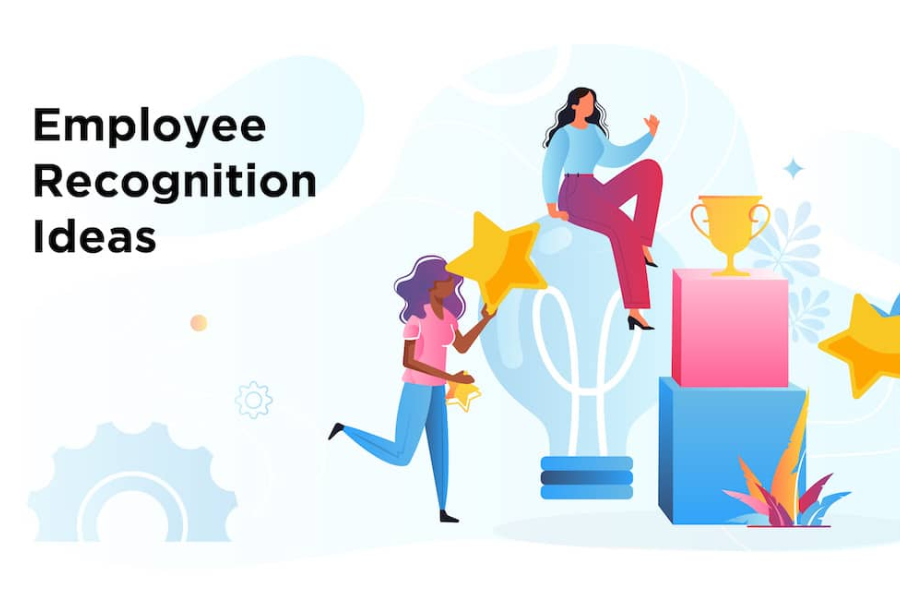Creative Ideas for Recognizing Employee Achievements
Table of Contents
- Introduction to Employee Recognition
- The Impact of Employee Recognition
- Creative Award Ideas
- Personalization: Making Awards Meaningful
- Alternative Ways to Recognize Employees
- Implementing a Recognition Program
- Common Challenges and Solutions
- Conclusion: The Future of Employee Recognition
Recognizing employee achievements creatively can boost morale and motivation. Personalized awards like custom trophies or certificates can make recognition memorable. Public acknowledgment, whether during meetings or via company newsletters, highlights achievements. Extra vacation days, professional development opportunities, or exclusive experiences can further enhance appreciation. Hosting special events, like recognition luncheons or virtual celebrations, adds a personal touch. Tailoring recognition to individual preferences shows thoughtfulness and helps build a more robust, engaged, and loyal workforce.
Introduction to Employee Recognition
A positive work culture is primarily dependent on employee appreciation. It not only boosts morale but also enhances productivity. In today’s competitive job market, organizations around the globe are constantly looking for innovative ways to acknowledge their team’s hard work and dedication. Corporate recognition programs are pivotal in this effort, providing tangible ways to reward and motivate employees. This is where corporate awards come into play. When used effectively, these awards can create a motivating environment for employees, fostering loyalty and long-term engagement.
The Impact of Employee Recognition
Several studies have demonstrated that organizations with solid recognition programs have lower employee turnover and better employee engagement. Recognized employees are more satisfied and often go above and beyond their duties. This is supported by a study by Gallup, which found that employees highly value personalized recognition. Beyond simply benefiting the person, employee recognition also improves team chemistry, fosters an environment of gratitude, and boosts a company’s bottom line. Organizations that prioritize employee recognition often find themselves with a more motivated and loyal workforce.
Creative Award Ideas
Awards can range from traditional plaques to unique trophies, helping to create a personalized and memorable recognition experience. Here are some creative ideas that can make your recognition program stand out:
- Customized crystal awards: These elegant awards can be tailored to reflect the nature of the achievement, making them a popular choice for special recognitions. The transparency and brilliance of crystal symbolize clarity and success, which can motivate recipients.
- Eco-friendly awards: Made from recycled materials, these awards are perfect for sustainability-conscious companies. They honor staff accomplishments and show a dedication to environmental sustainability. This award can also enhance the company’s corporate social responsibility profile.
- Functional awards: Items like desk accessories or even practical gadgets can serve as both recognition and valuable tools for the recipient. These awards are appreciated for their aesthetic value and utility in the everyday work environment, making them doubly beneficial.
Personalization: Making Awards Meaningful
Personalizing awards can add significant value and meaning. Including an employee’s name, role, and specific achievement can transform an ordinary award into a treasured keepsake. Personalization signifies that recognition is a generic gesture and a heartfelt acknowledgment of the individual’s contributions. This enhances the employee’s sense of accomplishment and reinforces the company’s appreciation of their efforts, making the recognition more impactful and memorable for the recipient.
Alternative Ways to Recognize Employees
Besides physical awards, there are several other forms of recognition to consider. Public acknowledgments during meetings or through company-wide emails can spotlight achievements in a personal and affirming way. These acknowledgments can build a culture of recognition where achievements are celebrated collectively. Additionally, professional development opportunities, like conferences or training sessions, serve as recognition and growth avenues. These opportunities allow employees to advance their skills and career prospects, demonstrating that the company values their long-term development.
Implementing a Recognition Program
To roll out an effective recognition program, careful planning is crucial. Establish clear criteria and ensure consistency in how recognition is awarded. Follow these steps to build your program:
- Identify goals and objectives: Define what you hope to achieve through your recognition program. Establishing clear objectives helps provide direction and focus for the initiative.
- Determine the types of recognition that suit your organization: Choose awards and other forms of recognition that align with your company culture and values. This alignment ensures that the recognition feels authentic and meaningful to employees.
- Communicate the program and criteria to all employees: Ensure everyone understands the program’s workings and the qualifications for recognition. Transparency in communication helps set clear expectations and fosters a sense of fairness.
- Review the software often and make any adjustments depending on input. Continuously refine your program to meet your employees’ needs and preferences. Periodic reviews and feedback loops help keep the program relevant and effective.
Common Challenges and Solutions
One major challenge in employee recognition is ensuring all employees feel equally valued. This can be a delicate balance, especially in larger organizations with diverse teams. A report from SHRM suggests that educating managers on the importance of recognition and providing them with the tools to do so effectively can help address this issue. Another common challenge is maintaining consistency across different departments. Implementing standardized criteria and regular training sessions for managers can help ensure a uniform approach to employee recognition throughout the organization.
Conclusion: The Future of Employee Recognition
As workplaces evolve, so too will employee recognition methods. Staying adaptable and attentive to employee needs will ensure that recognition programs remain effective and appreciated. Whether through traditional awards or innovative new forms of recognition, the key is consistently and meaningfully acknowledging your team’s achievements. Organizations that prioritize and innovate in their recognition efforts will likely enjoy higher employee engagement, satisfaction, and retention levels. The ability of employee recognition to change and remain relevant in light of the shifting dynamics of the contemporary workplace will determine its future.
Stay informed with the latest updates and exclusive features at NewsletterTribune.com.





